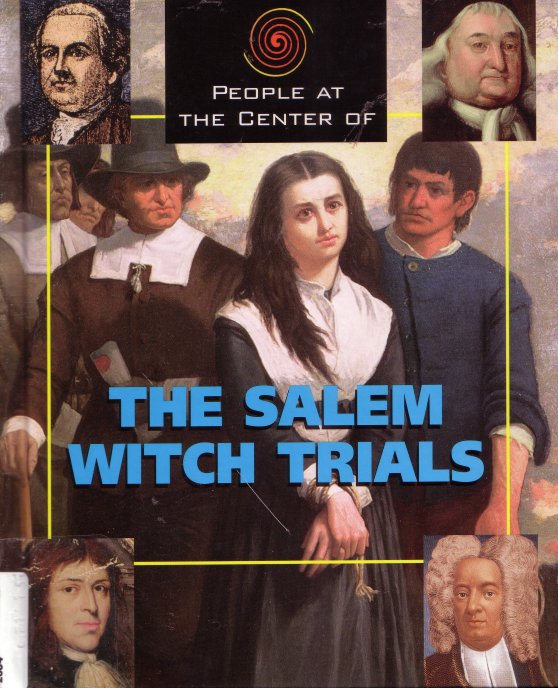
People at the Center of The Salem Witch Trials

This book for young readers examines the Salem Witch Trials, but differs from other books by focusing on the main characters involved.
The book starts right out noting something I haven't seen in other books. There was a Salem Village and a Salem Town. There were major differences, the town being richer and basically in charge of Salem Village.
The book mentions the trials in Europe, and says “thousands” were arrested, tried and executed, but gives no specific number.
It then talks about how strict the Puritans were. Children were not allowed to run, shout or play. All their time was spent on chores. The only book girls were allowed to read was the Bible.
“The combination of Salem Village's isolation, insecurity over dangers seen and unseen, and fear of witches led to unusual events during the winter of 1692.” The book thus ties in a number of factors causing the hysteria of the witch trials.
The book notes that most of the accused were women, were ones somewhat different than other women (older, more independent, etc.), and generally were associated with Salem Town (the richer area), and the accusers were from Salem Village (the poorer area.) Thus, one motivation might have been a form of revenge against the Town and its people.
The book also talks about the unhealthy conditions in the prisons and the use of torture to get confessions.
The first two specific people mentioned are Heinrich Kramer and James Sprenger, “Priests (who) wrote about witches, magic.” They were the ones who wrote the Malleus Maeficarum, an anti-witch book.
Then the book tells about Cotton Mather. He was anti-witch from the beginning; really obsessed about witches.
Samuel Parris is next. He was involved in the politics between Salem Village and Salem Town.
Tituba is next. She was a slave from Barbados.
Elizabeth Parris is next. She was the girl that started the entire thing.
Anne Putnam. She made the most accusations. The book notes that the girls making these charges stopped when people stopped paying attention to them.
Sarah Good. Her five-year-old daughter was accused of being a witch and was put in prison, and Sarah Good was hung.
Bridget Bishop. It's interesting that her first two husbands died under mysterious circumstances. From the book's description, she was quite a character.
John Proctor. He and his wife were both accused, and he was hung. They lived in Salem Town and were prosperous, so the Town vs. Village problem is seen again. The thing I don't understand, though, is why young girls would be making the charges to get back at the rich town people; I would think that it would be older people who would hold the grudge. Maybe the older people manipulated the girls once things began, so they could get revenge on the town people without it looking like they were the ones getting the revenge.
Giles Corey. His method of execution was extremely nasty.
William Phips. The governor of Massachusetts.
William Stoughton. He got appointed chief justice even though he had no legal background at all.
Samuel Sewall. He voiced public regret over his role in the trials.
Robert Calef. He wrote the first book to expose what happened at the trials. No publisher in North America would put it out, so he had to go to England to get the truth told.
There is also a chronology of events, and other sources to consult. This is a very informative and well-done book.
Back to American Girls index page
Back to Kirsten index page
Back to main home page index
|